In this short essay my aim is modest and two-fold. First, I would like to share with you a story about an experiment in ecological-environmental-scientific-poetics that worked out beautifully. It worked so well that I believe it is worth sharing. Second, in the spirit of sharing, so that others can try out this recipe, I will make explicit the elements of that experiment, including certain autobiographical facts—the “choses et faits d’un agencement poétique-scientifique” that I believe were those which permitted une connexion profonde.
My initial concern was that I would experience isolation as an artist in a milieu strongly marked by a scientistic and empiricist frame. People “worked” while I was doing “something else.”
My training and passions do not line up so nicely. They form something like an isosceles triangle: poetry-science-philosophy. What is important to me, philosophically, is to reflect on how these different métiers can be thought of as distinct forms of activity. They are distinct but not entirely opposed: somewhat complementary. They are three “forms of knowing,” as Michel Foucault might name them. I am much more interested in structures, forms and forces than in content because this perspective allows us to say that each form of knowing is a different form, not so much in what it is about—scientific facts, poems or metaphysical truths—but rather, each is a unique action, or set of actions.
Philosophy acts to find the fissures in large slabs of thought and push through them, like water into crevasses, and yet it flows wherever it flows, without fear. Science acts with a level of certainty and approbation. It cuts any piece of The Real into smaller pieces, and tries to name them to say how they fit together and at which scales these pieces belong. Each act of science, though, as Anselm Kiefer rightly notes, “points us further in the direction of the unknown,” and this smaller and smaller unknown serves as a source of both inspiration and dejection. Poetry is not the art of representation of The Real in words. I think of poetry as I think of ecosystems: commas, words, vowels, phrases, paragraphs . . . these are living arrangements within which all the various relations can come to pass such as predatory words, opportunistic phrasing, and invasive species of banalities. Poetry acts meaningfully, holding together what cannot be otherwise held together. It does this through the sound and shape of words. It enacts relations and allows them to vibrate and flourish at the level of language. Poetry lets the known and the unknown fit into the same place using the tricks of language. In this, it allows us to imagine a new Real, even if this new reality passes by the time the poem ends.
I want to suggest that this configuration—co-participations in three ways of knowing—is the key to the success of this experiment. In Foucault’s phrasing, each one is, or has, a different kind of power to act upon further actions; this means that coming together, an absolutely new power emerges. I also want to affirm that this configuration does not have to be poetry-biology-philosophy. Whether it be engineering + dance + theology OR primary education + music + gardening OR anthropology + sculpture + theoretical physics; a productive combination of three diverse approaches (either in one person or in a collaborative) is a very promising working-figure. This is especially so if there are some levers of distance and ambivalence in the mix such that there can be disavowals that shift the action and allow others to enter and leave these experimental spaces.
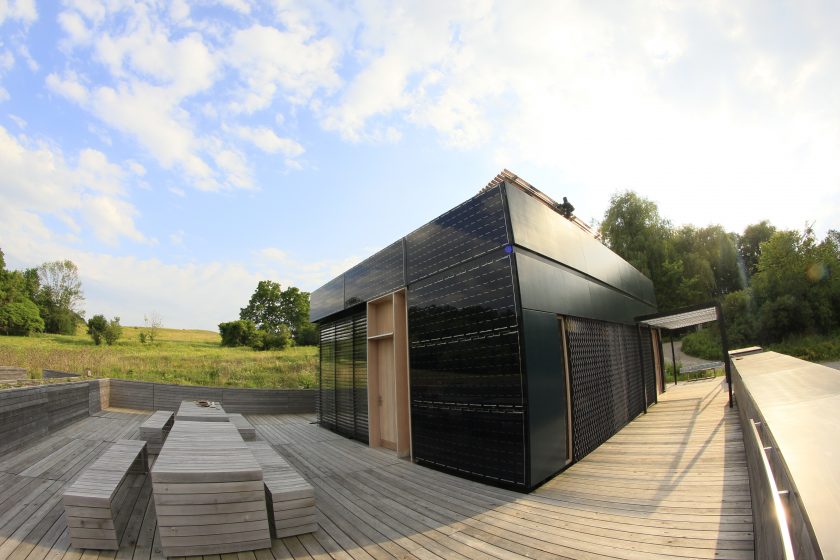
The situation
About three years ago, Musagetes (also the creator of ArtsEverywhere), a Guelph-based organization, formed a courageous and visionary partnership with rare Charitable Research Reserve, a land trust and environmental institute near Guelph in Cambridge, Ontario. One of the central aims of Musagetes is to create community through the arts, so it is extremely active throughout the region. Musagetes also works within the broader context of Ontario, creating programs and partnerships into working class corners of the province such as its now-concluded program in the city of Sudbury. In contrast, rare is a physical location where scientific research projects are carried out by university faculty, students, rare staff, and interns. Stephanie Sobek-Swant, Executive Director of rare also describes it as having “. . . a unique method of conservation that includes, among other things, the creation of communities of concern around sensitive lands, playing host to approximately 50,000 visitors annually from a broad sector of society.”
Scientists who do field work (e.g. botanists, entomologists, hydrologists, geneticists, soil scientists, ecologists) need places to complete their longitudinal studies. These places have to have the features that the scientists are interested in (e.g. a certain population of frogs or mites, patterns of erosion in the rocks, a system of streams and rivers, bird populations, etc.), and they have to be accessible. This land, which is the physical space of rare, is on the floodplain of one of the most politically and geographically important rivers in southwest Ontario—the Grand River just south of its confluence with the Speed River. In 1812, the US tried to invade Canada, which at the time was still a colony of Great Britain. Thousands of indigenous people fought against the Americans alongside the Loyalists, and in return for their fidelity, the British Crown granted them 6 miles of land on either side of this river, for the whole of its length, totalling nearly 400 km. This Haldimand Tract turned out to be a treaty that, of course, was never fully honored. In 2010, the University of Waterloo erected an award-winning, solar-powered, state-of-the-art architectural accomplishment called North House. It sits on rare property, where passerby mostly just gawk at it or attend the occasional guided tour. Mostly it goes unoccupied on the land where hundreds of scientists work. Musagetes and rare proposed that North House be used for an artist residency program starting in the fall of 2014 (called the “Eastern Comma Writer-in-Residence”).
There are many such opportunities for writers and artists around the world: Vatnasafn/The Library of Water in Stykkishólmur, Iceland, the Fogo Island Arts residency off the Coast of Newfoundland, the Centre for Coastal Waters Health on Vancouver Island, the Banff Centre for the Arts. I have been on two of these retreats, and even though I was able to produce a giant quantity of quality writing, I really only engaged with other writers in the workshop, but that engagement was often in order to be inspired by, and in turn, to gain something for my private (and pre-planned) writing project. The North House Eastern Comma residency was different for me, though, in ways that turned out to be very important for meshing the power of cultural capital with the power of data. It was a truly transformative experience rather than just acquisitive.
The residency had two stipulations. One was that the writer somehow “engaged the scientific community (formal and informal)” who made use of the terrain. The director had envisioned a vernissage or a reading at the end of my residency, to which the scientists would be invited along with the usual cultural suspects. The other condition of this residency was that the writing done there “be rooted in, and reflect, the place,” to engage with the land and the ecologies (i.e. people, birds, plants, rock formations, minerals, archeological artifacts) who inhered there.
The experiment
My initial concern was that I would experience isolation as an artist in a milieu strongly marked by a scientistic and empiricist frame. People “worked” while I was doing “something else.” In the past I have been invited to interdisciplinary events as the poet and often given a little demonstration of art at the end, mostly not integrated into the heart of the activities. I functioned like the dessert that could be foregone. I have also been the only philosopher (ethicist) on many social and natural science research teams, and again, experienced extreme disciplinary isolation that wasn’t just a matter of not sharing an idiom; it was as though there was an abyss between what I did and what they did. There was nothing for any of us to do but perform our roles at a distance from one another. At North House, I felt this immediately during the first week. Although I had suggested I would hold “Open House Fridays” where anyone working on the property could come and chat with me (the parking lot was always full whether of researchers, gardeners accessing the community garden, birders, hikers), nobody did. They went by the groovy glass house, and sometimes waved at me, but that made me feel like an animal in the zoo.
I was also concerned that my relationship to that land would be superficial. I feared that, as a poet with good eyes and ears, and a propensity for (as Virginia Woolf says) “making phrases,” I would walk the land and see only a surface bouquet like a tourist walking the streets of a city she is just passing through. I remember walking through the fields looking at the vegetation and the sky patterns feeling pressure to know it in a way that felt unavailable to me.
It was in the second week, when all that I had written was utterly trite and devoid of intensity, that I came up with The Idea: I would read the articles the scientists working at rare had published based on their data collection at the site. Initially I was thinking of it as a means to fast-track my tourist sensibility and use the number of hours that they had put into “looking” at the local phenomena so that I could see, at the level of detail they operated. For example, a scientist was studying a parasitic wasp that used a certain kind of hollow stem to nest. I would never have “seen” that happening had I not read the articles, but once I did my “nature walks,” those drab stems were transformed. Suddenly, I had high powered lenses to see down deeper into that world.
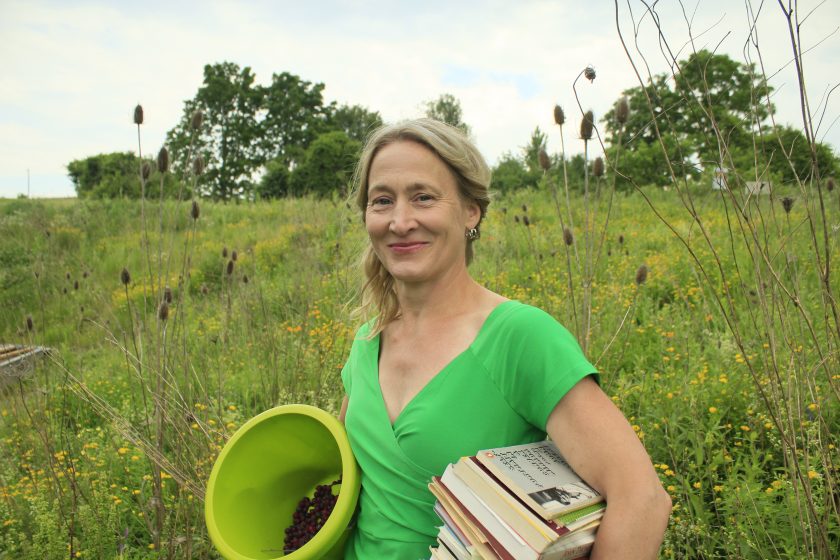
But it wasn’t quite enough. I didn’t want to be alone walking those trails, even with a better pair of glasses. I wanted to be accompanied by the ones who were passionate about it. I began to call and email the scientists, telling them who I am and asking if I could go with them to their sites the next time they were working on the grounds. Some never returned my calls. But others did, and we walked around. I asked a million questions, and they answered them all. Through their answers and in the act of going with them, I saw and heard something I am certain I would never have seen or heard, even with the best goggles lent to me: these were people who cared. They loved what they studied, even if they had no way to express that in their academic reporting of it.
As I was reading these articles week after week, something else began to happen. Often buried in the middle of these articles, which are nearly devoid of poetics and scoured of any expression of affect, I would encounter the most strange and beautiful words and phrases. Now because I am a poet, my reading of words is never just for their signification; it is also for their resonate capacity and their ability to metastasize into other meaningful relationships. But also, because I am a person who walked with others whose words I was reading, I could also feel that these were their own affects. I started to relate to these articles, then, as “found poetry,” cutting and dissembling what I took to be beautiful laden turns of phrase, and I set them aside as my own poetic material, knowing the “owners” of these excerpts (which is not usually the case for found poetry). It became a salvage operation like found poetry, but with a key difference: each of these “gleanings” has a footnote where I reference the article from which it was taken. I took my in-passing observations, borrowed insights, the scavenged phrasings and vocabulary, the subterranean axes of meaning, and the voices of the scientists and the way they spoke about what they made graphs of, and built poems. Among these very diverse standpoints, I found profound and coherent threads; deep thematic links that could be discerned, or forged, across the driest facts and stats. The themes included: loss and archival urgency, the inability to protect anything from the forces of change, insecurity and optimism, and trying to save things from getting lost or decaying or passing out of existence, whether a memory or a gene variation.
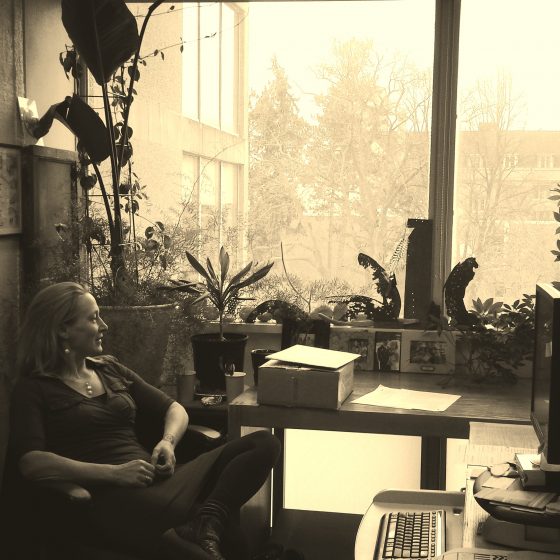
The final movement of this experiment was something that again, I had not planned out or anticipated. It ran against my experiences of having made something (art) without putting the work into creating the best possible conditions for its reception. For the closing event of my residency, I personally invited all the scientists whose work I had used, and whose accompaniment I had enjoyed, qua scientists. I was asking them to come as patrons of the arts. I read some of those poems, first introducing them as having been inspired not only by a particular location, ecological niche or artifact at rare but also having been expedited via the work of the scientists. The poems were long and strange: hybrids of in-situ science and poetry. Although they read unlike anything I have ever read previously, they are filled with the sense of “nature.” After my reading most of the questions from the audience were directed to the scientists (!), whose answers transitioned to me, in turn, asking questions of them, creating an unscripted few hours of genuine curiosity and mutual admiration.
While I have not finished the manuscript from my time at North House, I hope to reproduce this kind of event at the book launch. My powerful hope is that the book and the launch of it into the world will carry with it some of that unique action-upon-and-action, serving as a signal to the scientists that my poetry, in turn, can be treated as material for their own learning & writing, whatever form of address that may take.
Fall Asters[*]
The flowering plants
form the trophic basis of productivity
in most terrestrial systems-
The fall asters – Symphyotrichum –
fill Sparrow Field, to the north,
they fill the eye, in fall.
In fall, the asters are in flower.
They are the kind of flower that,
to make another one, rely
entirely on something other than a flower:
A vector
A wingèd thing
A brief inconvenience
Something other that takes a bit of her and carries it to the mouth
of a hole in another.
Symphyotrichum is non-apomictic.
This means she has a permanent need–
including but not limited to bees, flies, butterflies, beetles, bats and birds–
a permanence to her reliance upon
Any of the 43 kinds of bee, or weevils,
or tree crickets even
With their hooked leg hairs and crushing mouthparts,
which they take promptly & directly to her soft parts:
There might be a coaxing.
in a sing-song voice
at the (as yet unreceptive) pistil.
There is always the not-small-matter of acceptance:
Of touch.
Touch is an open-mouthed form of trust,
Touch is a strictly private matter between you and not-you; communion–
A swallowing whole of the bread body;
Of the pollen or the saviour himself which should never
touch the teeth as it passes.
In these moments your future is someone else’s making.
Karen Houle
Guelph, Ontario
This essay is an abridged version of a keynote talk given October 2, 2015 in Paris at the “Formes Pour Vivre L’Environnment” conference, hosted by LADYSS (University of Paris 1, 7, 8, & 10) and CRAL (École des Hautes Études en Sciences Sociales). It originally appeared on ArtsEverywhere.
[*] Type in italics is excerpted from: Woodcock, T.S., Pekkola, L.J., Dawson, C., Gadallah, F.L., and Kevan, P.G. “Development of a Pollination Service Measurement (PSM) Method Using Potted Plant Phytometry.” Environmental Monitoring and Assessment, April 2014. Accessed May 2016. doi:10.1007/s10661-014-3758-x.


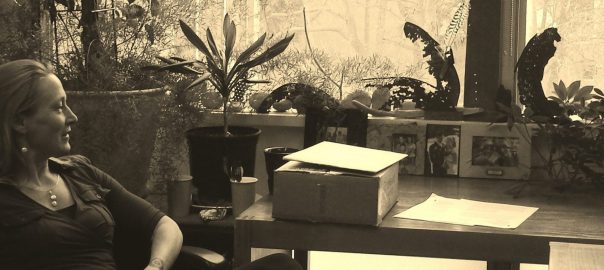
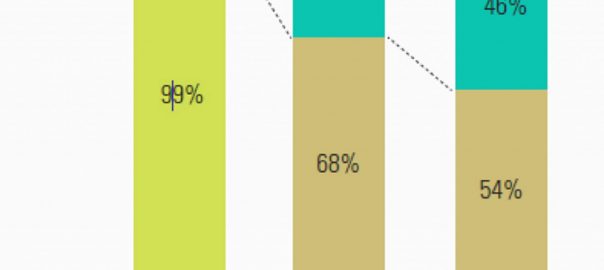
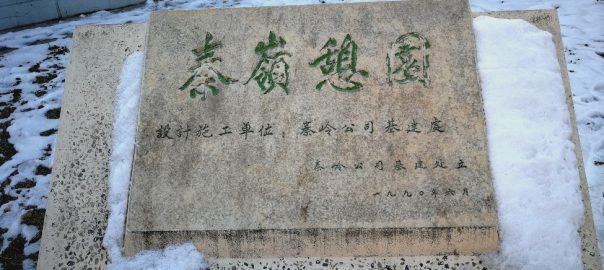
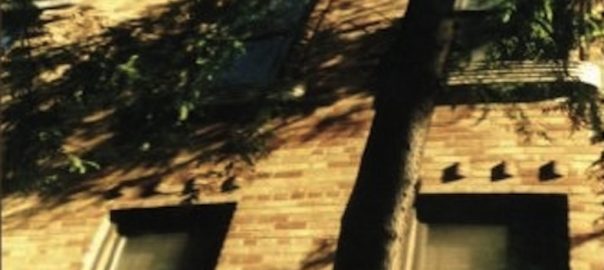
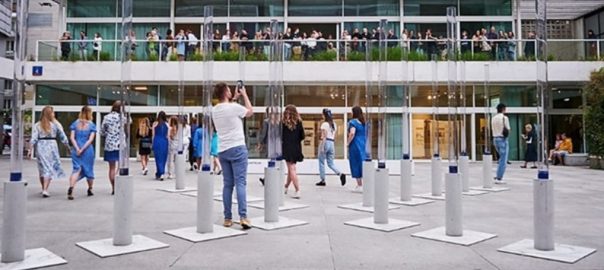
Leave a Reply